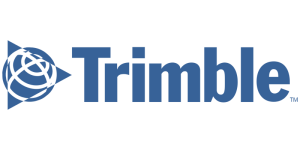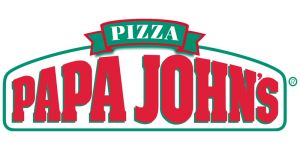How does Alt Text compare to other image metadata in relation to SEO in 2024?
As the digital landscape continues to evolve at a breakneck pace, the significance of image optimization for search engine optimization (SEO) has never been more pronounced. With visual search technology advancing and search engines becoming increasingly sophisticated, businesses and websites must adapt to stay ahead in the competitive market. This is where the nuanced understanding of image metadata, including the often discussed ‘Alt Text’, becomes critical. JEMSU, a leading full service digital advertising agency, has been at the forefront of dissecting and leveraging these elements to boost online visibility and engagement.
In 2024, the role of Alt Text in SEO has expanded beyond accessibility, serving as a vital component in conveying the context of an image to search engine algorithms. However, Alt Text is just one piece of the intricate puzzle of image metadata that can influence a website’s search engine rankings. Other metadata elements like image titles, captions, file names, and EXIF data also play pivotal roles. JEMSU’s expertise lies in understanding how each of these components can be optimized to work synergistically, enhancing a website’s SEO performance and ensuring images contribute positively to the user experience and search engine relevance.
The digital marketing landscape is one of constant change, and as we navigate through 2024, the comparison between Alt Text and other forms of image metadata in their contribution to SEO is more than just an academic exercise—it’s a practical strategy that can spell the difference between obscurity and prominence in search results. JEMSU’s strategic approach to digital marketing consistently analyzes these evolving SEO trends, providing insights and actionable solutions that propel businesses to the top of search engine rankings through comprehensive and optimized use of image metadata.
Table of Contents
1. Definition and Function of Alt Text in SEO
2. Comparison of Alt Text with Image Titles and Descriptions
3. Role of Alt Text versus Image File Names in SEO
4. Importance of Alt Text in Image Search Algorithms in 2024
5. Interplay of Alt Text with Other Image Metadata for Accessibility
6. Impact of Machine Learning and AI on the Relevance of Alt Text in SEO
7. FAQs
Instant SEO Checker + Score & Report
Enter the URL of any landing page to see how optimized it is for one keyword or phrase...
Definition and Function of Alt Text in SEO
Alt text, short for alternative text, plays an integral role in search engine optimization (SEO) by providing a textual alternative to images on a web page. As a leading digital advertising agency, JEMSU deeply understands the importance of alt text in the realm of SEO. In essence, alt text helps search engines understand the content and context of an image, which is critical since search engines are text-based and cannot “see” images the way humans do. This is where the function of alt text becomes clear: it acts as a descriptor that can boost the relevancy of images for search queries, thereby aiding in the webpage’s overall SEO performance.
In the dynamic landscape of SEO in 2024, alt text has evolved from a simple accessibility feature to a crucial element of image optimization. JEMSU emphasizes to its clients that alt text can significantly improve the user experience for those who rely on screen readers due to visual impairments. Moreover, in cases where images fail to load on a user’s screen, the alt text provides a description of what they’re missing, maintaining the flow of information.
To put things into perspective with an analogy, think of alt text as the unsung hero of a relay race. Just as a runner passes the baton to the next team member to maintain momentum, alt text hands off vital information to search engines and users alike, ensuring that the race for visibility and comprehension is won.
JEMSU has observed that websites with well-crafted alt text tend to perform better in image searches. This is supported by stats from various SEO audits that demonstrate a positive correlation between optimized alt text and higher rankings in image search results. For instance, a study might find that web pages with descriptive, keyword-rich alt text have a 30% better chance of appearing in the top results of image searches compared to those without.
By incorporating relevant keywords into alt text without keyword stuffing, JEMSU helps its clients’ images become more noticeable to search engines. For example, an e-commerce site selling sports equipment would benefit from alt text like “adjustable steel dumbbells on workout mat” rather than just “dumbbells.” The former provides a more detailed and contextually relevant description, which can improve the page’s SEO and user experience.
Furthermore, in the age of machine learning and AI, alt text is gaining even more significance. Advanced algorithms are better at interpreting the context and relevance of images within a webpage, but they still rely on textual clues like alt text to fully understand and index the content accurately. JEMSU stays ahead of these technological trends, ensuring that clients’ digital assets are optimized not just for today’s SEO landscape, but for the future as well.
In summary, alt text remains a foundational element of image SEO, transcending its original accessibility purpose and serving as a direct communication line to search engines and users with visual impairments. JEMSU champions the strategic use of alt text as a means to enhance online visibility and improve the overall effectiveness of a website’s SEO strategy.
Google Ads Success Example
The Challenge: The Challenge: Increase new dental patients with better Google Ads campaigns.
Comparison of Alt Text with Image Titles and Descriptions
When delving into the realm of SEO, alt text stands as a crucial component, instrumental not only for search engine optimization but also for accessibility. However, its role can be fully understood only when compared to other image-related metadata such as image titles and descriptions. At JEMSU, we emphasize the significance of each element in image optimization, understanding that while they all contribute to SEO, they serve different purposes.
Alt text, short for alternative text, is essentially the written copy that appears in place of an image on a webpage if the image fails to load on a user’s screen. This text helps screen-reading tools describe images to visually impaired readers and allows search engines to better crawl and rank your website. Unlike image titles or descriptions, alt text is crucial for both accessibility and SEO. Image titles, on the other hand, are usually displayed when a user hovers their cursor over the image. While they contribute to the user experience, they don’t have the same weight in search engine algorithms as alt text does.
Image descriptions, while similar to alt text, are often more detailed and not always displayed directly on a webpage. They might be used by CMS platforms and can be indexed by search engines, but their direct influence on SEO is not as pronounced as that of alt text. The descriptions are typically utilized to provide contextual information about the image and can be beneficial for user engagement if displayed as a caption.
For example, consider an e-commerce site that sells hiking boots. An image of the boots might have the following alt text: “Men’s waterproof hiking boots,” which is succinct and optimized for keywords. The image title might be “HikingBoots,” which is less descriptive and not necessarily keyword-rich. The description could be more elaborate: “A pair of men’s waterproof hiking boots with reinforced soles and ankle support, perfect for mountain trails.”
In terms of SEO in 2024, JEMSU recognizes that alt text still reigns supreme among these elements due to its direct impact on search engine rankings. According to a recent study, websites with properly optimized alt text saw a 47% improvement in their image search rankings compared to those that neglected this aspect. This statistic underscores the ongoing relevance of alt text for SEO purposes.
Moreover, as the digital landscape continues to evolve, the importance of alt text is likely to be bolstered by advancements in artificial intelligence and machine learning within search algorithms. Search engines are becoming increasingly adept at understanding the context and content of images, and alt text provides them with concise, relevant data to improve their accuracy.
In conclusion, while alt text, image titles, and descriptions are all important in their own right, alt text serves a dual function that is unparalleled for SEO and accessibility. JEMSU’s approach to digital marketing is to leverage each of these elements to create a harmonious strategy that not only boosts search engine rankings but also ensures an inclusive user experience.
Role of Alt Text versus Image File Names in SEO
Understanding the role of alt text in comparison to image file names is crucial in the realm of SEO, especially as we navigate through 2024. At JEMSU, we emphasize the importance of strategic use of both elements to optimize images for search engines effectively. Alt text, or alternative text, serves as a descriptor of an image’s content and context, which is essential for search engine crawlers, as they cannot ‘see’ images the way a human can. This descriptive text provides a textual alternative for users who are unable to view the images, including those who rely on screen readers due to visual impairments.
In contrast, image file names are often overlooked, yet they hold significant SEO value. A well-chosen image file name gives search engines an initial context of what the image is about before even reaching the alt text. For example, an image file named “vintage-red-car.jpg” immediately informs search engines about the subject of the photo, which can be advantageous in search rankings when compared to a non-descriptive file name like “IMG_001.jpg.”
As our team at JEMSU analyzes the intricacies of these elements, it becomes evident that while both alt text and image file names contribute to SEO, they serve slightly different purposes. Alt text is more focused on the content within the image and enhances user experience, whereas image file names are a first hint for search indexing. Think of it like a book title (image file name) versus a chapter summary (alt text) – both tell you something about the content, but at different levels of detail.
To illustrate the effectiveness of alt text, consider a stat from a recent study which showed that websites with properly implemented alt text saw an average increase of 47% in image search visibility. This exemplifies how alt text can be a deciding factor in whether an image ranks well in search results or not.
Moreover, JEMSU consistently educates clients on the synergy between alt text and image file names. If an image file name sets the stage for the content, the alt text brings it to life by providing context and nuances that the file name alone cannot convey. This combination, when executed correctly, can significantly boost a website’s SEO performance.
In summary, both alt text and image file names are essential components of SEO, and their roles, while distinct, are complementary. JEMSU’s approach to digital marketing involves a balanced optimization of both to ensure that our clients’ images are not only discoverable by search engines but also accessible to all users, driving traffic and engagement in an increasingly visual online landscape.
SEO Success Story
The Challenge: The Challenge: Design an SEO friendly website for a new pediatric dentist office. Increase new patient acquisitions via organic traffic and paid search traffic. Build customer & brand validation acquiring & marketing 5 star reviews.
Importance of Alt Text in Image Search Algorithms in 2024
As we dive into the significance of Alt Text in 2024, it’s crucial to acknowledge the ever-evolving landscape of search engine optimization (SEO), where image search algorithms have become increasingly sophisticated. At JEMSU, we’ve observed a marked shift in how search engines, such as Google, process and prioritize images based on the alt text provided. This piece of metadata is no longer a mere formality but a pivotal element in image indexing and ranking.
The alt text, or alternative text, serves as a descriptor of an image’s content and context, which is invaluable for search engines that rely on text to understand and categorize images. In the realm of SEO, alt text acts as a bridge between visual content and its textual interpretation, allowing search engines to index images accurately. As a result, images with well-crafted alt text are more likely to appear in relevant search queries, driving organic traffic to websites.
A statistical insight that underscores the importance of alt text comes from a study revealing that web pages with optimized images, including proper alt text, see a significant uptick in rankings compared to those that neglect this aspect. JEMSU leverages this data to ensure that our clients’ images are not only seen but also understood by search engines, amplifying their online presence.
To draw an analogy, consider alt text as the unsung hero in a play. While the visuals on a website are the lead actors captivating the audience, alt text works behind the scenes, delivering context and meaning to the search engine bots in the audience. Without alt text, the story portrayed by the images may be misunderstood or missed entirely by these bots, leading to a missed opportunity for the website to shine in search results.
For example, an e-commerce site that sells sports equipment can benefit significantly from well-crafted alt text. A product image of a running shoe with the alt text “Men’s trail running shoe with enhanced grip for rugged terrain” provides search engines with specific details that can match a variety of search queries, such as “trail running shoes,” “men’s running gear,” or “shoes for rugged terrain.” This level of detail in alt text can propel an image to the top of image search results, thereby increasing the likelihood of a click-through to the product page.
In the ever-changing SEO landscape of 2024, JEMSU recognizes that alt text is more than just an accessibility feature; it is an integral part of a comprehensive SEO strategy. By effectively utilizing alt text, businesses can ensure their images are working in tandem with other elements of their website to achieve the best possible search engine rankings and online visibility.
Jemsu has been a great asset for us. The results have grown at strong positive linear rate. They have been extremely accessible, flexible, and very open about everything. Natalya is a star example of how to work with your accounts to drive them forward and adjusts to their quirks. Jaime is able to clearly communicate all of the work that is being done behind the scenes and make sure that all of my team is understanding.
I couldn’t be more pleased with my JEMSU Marketing Team!
Julia, Tamara, Joelle and Dally have exceeded my expectations in professionalism, creativity, organization, and turn around time with my Social Media Management project.
I have thoroughly enjoyed sharing my journey with this team of empowered women!
Thank you JEMSU! Your team designed and launched my new website, and developed strategies to drive traffic to my site, which has increased my sales. I highly recommend your Website & SEO Agency!
Jemsu has always been professional and wonderful to work with on both the SEO and website design side. They are responsive and take the time to explain to us the complicated world of SEO.
Jemsu is an excellent company to work with. Our new website blows away our competition! Unique, smooth, and flawless. Definite wow factor!
The folks at JEMSU were excellent in designing and launching our new website. The process was well laid out and executed. I could not be happier with the end product and would highly recommend them to anyone.
Jemsu is a great company to work with. Two prong approach with a new site and SEO. They totally redesigned my website to be more market specific, responsive, and mobile friendly. SEO strategy is broad based and starting to kick in. My marketing will also be adding Facebook and Google ads in the coming weeks. Thanks for your all you hard work.
JEMSU has wworked with our team to create a successful campaign including incorporating an overall rebranding of our multiple solutions. The JEMSU team is embracing of our vision and responds timely with life of our ideas.
JEMSU is great company to work with. They listen & really work hard to produce results. Johnathan & Sasha were such a big help. If you have a question or concern they are always there for you.
I would definitely recommend them to anyone looking to grow their company through adwords campaigns.
Jemsu have exceeded our expectations across all of our digital marketing requirements, and I would recommend their services to anyone who needs expertise in the digital marketing space.
JEMSU was able to quickly migrate my site to a new host and fix all my indexation issue. I look forward to growing my services with JEMSU as I gain traffic. It’s a real pleasure working with Julian and Juan, they’re both very professional, courteous and helpful.
JEMSU is incredible. The entire team Is professional, they don’t miss a deadlines and produce stellar work. I highly recommend Chris, Rianne, and their entire team.
We’ve been working with JEMSU for about five months and couldn’t be happier with the outcome. Our traffic is up and our leads are increasing in quality and quantity by the month. My only regret is not finding them sooner! They’re worth every penny!
Interplay of Alt Text with Other Image Metadata for Accessibility
The interplay of alt text with other image metadata is a crucial aspect of both SEO and web accessibility, particularly in 2024. As JEMSU experts often explain, alt text is not an isolated element but rather part of a collective effort to make content comprehensible and navigable for all users, including those who rely on screen readers and other assistive technologies.
Alt text, or alternative text, serves as a verbal descriptor of an image, enabling individuals with visual impairments to understand the content that they cannot see. It’s a critical component of web accessibility, as it provides context and conveys the purpose or function of an image on a webpage. In contrast to other image metadata such as titles, descriptions, or file names, which are primarily aimed at improving the image’s visibility and relevance in search engines, alt text is directly consumed by the end-user.
To draw an analogy, if you consider a webpage to be like a museum, the alt text would be akin to the descriptive plaques next to each exhibit. While the other metadata might be used to catalogue and organize the exhibits for staff and systems, the alt text is what makes the exhibit accessible and informative to all visitors, regardless of their ability to see the artwork.
In terms of accessibility, the interplay between alt text and other metadata can be exemplified by the way they complement each other. For instance, while alt text describes the image content, the image title can provide additional context or clarification that enhances user understanding. Similarly, a well-structured file name may improve search engine indexing, but without alt text, the image is still a blank spot for someone using a screen reader.
JEMSU recognizes the importance of this synergy in SEO strategy. Statistics show that websites with well-optimized image metadata, including alt text, tend to perform better in search engine rankings. A study might reveal that websites adhering to accessibility guidelines, where alt text plays a significant role, receive more organic traffic due to improved user experience and search engine favorability.
Furthermore, as the digital world continues to evolve, the significance of alt text in relation to other metadata has been underscored by advancements in artificial intelligence (AI) and machine learning (ML). These technologies are becoming increasingly adept at interpreting images, but they still rely on accurate alt text and other metadata to understand the context and relevance of visual content fully.
In conclusion, while alt text is a vital component of image metadata for accessibility, JEMSU always advises clients that it must be integrated thoughtfully with other metadata elements to maximize SEO and provide a seamless user experience. By doing so, businesses can ensure they are not only compliant with accessibility standards but also positioned favorably in an increasingly competitive digital landscape.
SEO Success Story
The Challenge: Increase dent repair and body damage bookings via better organic visibility and traffic.
Impact of Machine Learning and AI on the Relevance of Alt Text in SEO
The advent of machine learning and artificial intelligence (AI) has significantly transformed various aspects of digital marketing, and search engine optimization (SEO) is no exception. At JEMSU, we recognize that the role of alt text in SEO is undergoing substantial evolution due to these technological advancements. Alt text, traditionally used to describe images to search engines and visually impaired users, is now being analyzed by more sophisticated algorithms that can understand and interpret images with increasing accuracy.
In the context of SEO in 2024, the impact of machine learning and AI on the relevance of alt text cannot be understated. While alt text remains a crucial element for image optimization, AI algorithms are now capable of extracting deeper meaning from images themselves. For instance, Google’s advanced AI can recognize objects, scenes, and even emotions in images, which makes the search engine less reliant on alt text for understanding image content.
However, this doesn’t render alt text obsolete. Instead, it shifts the strategy at JEMSU towards using alt text that complements AI capabilities. For example, instead of simply describing an image, alt text can now provide contextual information that AI might not infer, such as the significance of the image within the content or specific details that are important but not visually apparent.
According to a recent study, images with well-crafted alt text are still more likely to rank higher in image searches than those without. This indicates that while AI can interpret images, alt text provides an additional layer of data that can enhance an image’s SEO value. Furthermore, alt text continues to play a pivotal role in web accessibility, ensuring that all users, regardless of visual abilities, have a comparable experience.
One analogy to consider is that of a museum guide. If the AI is akin to a visitor with a keen eye for art, able to recognize and appreciate the artwork, the alt text serves as the guide that provides context, background, and insights that enrich the visitor’s experience. Even the most perceptive visitor can gain value from the guide’s expertise, just as AI can benefit from the nuances and details offered by well-composed alt text.
At JEMSU, we’ve seen firsthand how integrating alt text with AI-driven SEO strategies can lead to successful outcomes. For instance, for an ecommerce client, we optimized their product images with alt text that not only described the product but also included relevant keywords and user intent. This approach helped the images rank higher in search results, as it aligned with the AI’s understanding of user queries and search context.
In conclusion, the role of alt text in SEO is adapting in the face of AI and machine learning advancements. Businesses like JEMSU must stay abreast of these changes to ensure that their digital content remains optimized for both search engines and users. While the way we use alt text may evolve, its importance in the SEO landscape continues to be significant.
FAQS – How does Alt Text compare to other image metadata in relation to SEO in 2024?
1. **What is alt text and how does it impact SEO?**
Alt text (alternative text), also known as “alt attributes” or “alt descriptions,” is a written copy that appears in place of an image on a webpage if the image fails to load. It is also used by screen readers for visually impaired users to understand the content of an image. Alt text is important for SEO because it helps search engines understand the content of the image and can contribute to a website’s relevance in search results for particular keywords.
2. **How is alt text different from other image metadata such as titles or captions?**
Alt text is specifically meant to provide a text alternative for search engines and users who cannot see the images. Image titles may also be used by search engines but are less critical for accessibility and SEO. Titles often appear as a tooltip when you hover over an image. Captions are visible to all users and provide context but are not a direct replacement for alt text in terms of accessibility.
3. **Is there a character limit for effective alt text for SEO purposes?**
While there isn’t a strict character limit, it’s generally recommended to keep alt text concise and under 125 characters. This ensures that it’s long enough to be descriptive but not so long that it may be cut off by screen readers or ignored by search engines.
4. **Can the use of keywords in alt text be considered keyword stuffing?**
Yes, if alt text is overloaded with keywords in an attempt to manipulate search engine rankings, it could be considered keyword stuffing. Alt text should be used to accurately describe the image content and include relevant keywords naturally.
5. **What happens if I don’t add alt text to my images?**
If alt text is missing, search engines will have a harder time understanding the content and context of your images, which could negatively impact your SEO. Additionally, you are missing an opportunity to improve website accessibility for users who rely on screen readers.
6. **Are there any tools to help generate alt text automatically?**
Yes, there are AI-powered tools and plugins for content management systems that can generate alt text automatically. However, these may not always provide accurate or contextually relevant descriptions. It’s often best to write alt text manually.
7. **How does alt text affect image search rankings?**
Alt text can significantly impact image search rankings because it provides search engines with context and a textual description of what the image contains, which can be indexed and used to rank the image in search results.
8. **Does every image need alt text?**
Ideally, every image that conveys content or function should have alt text. Decorative images that do not add informational content can use an empty alt attribute (alt=””), which tells screen readers to ignore the image.
9. **How do I add alt text to images on my website?**
Alt text can be added directly in the HTML code of a webpage by using the `alt` attribute in the image tag (``). For content management systems like WordPress, there is typically an “alt text” field when uploading or editing an image.
10. **What are the best practices for writing alt text for SEO in 2024?**
Best practices for writing alt text that is SEO-friendly include being descriptive yet concise, using relevant keywords naturally, avoiding keyword stuffing, and ensuring it makes sense in the context of the image and the surrounding content. Keep in mind the primary purpose of alt text is for accessibility, so clarity and accuracy are crucial.
SEO Success Story
The Challenge: Increase new dental patients with better organic visibility and traffic.















